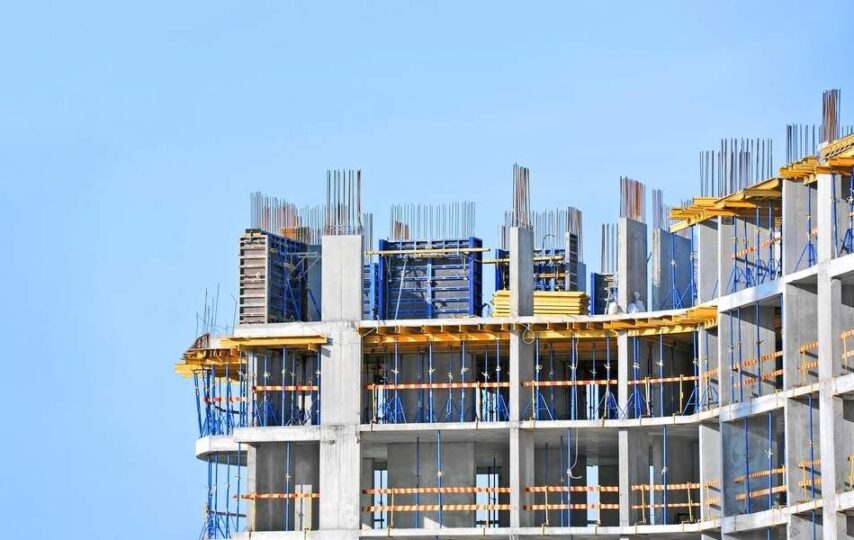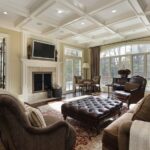Formworks are mainly used for construction, but they can also be found in the medical industry. Formworks are typically made of wood or metal and come in many shapes and sizes. They are important to both industries because without them it would be difficult to create concrete structures like buildings or hospitals.
Elements of Plastic Formworks
Plastic formwork elements are typically referred to as shuttering boards. The most common type of shuttering board consists of a perforated sheet made from rigid PVC that has been formed into shape using heat or steam.
Alternatively, decks can be composed of plywood sheets with aluminum profiles attached at regular intervals along each side.
A third option is to use galvanised steel sheets with aluminium profiles. Plastic shuttering boards are typically joined together using plastic strip connectors, although it is also possible to use metal brackets or steel screws and bolts.
Plastic strip connectors allow for fast stacking of the boards while ensuring that they remain watertight once in position.
Different types of plastic formworks
There are several types of plastic formworks available to be used for different types of construction.
Plastic Brick Formwork(PBF): is the most widely used type of plastic formwork due to its versatility and ease of use. The plastic bricks can easily be joined together, allowing for larger structures to be formed. These types of brick forms are often chosen by professionals for their long lasting durability, which allows these types of bricks to withstand the test of time better than other materials.
Sheet Plastic Formwork:
It is a type of reusable formwork that is manufactured from recycled HDPE plastic. They are used for walls, slabs and general construction applications.There are several benefits to using Sheet formwork systems . SheetPlast offers high quality reusable sheet forms at affordable prices. Sheet forms are easy to transport, can be reused and pose no risk of contamination to the substrate.
Alucobond Plastic Formwork
It is award-winning Alucobond Composite Panel Plastic Formwork for masonry and concrete screeds. With the appearance of a stone fabric, it offers architects and builders an extremely lightweight yet very strong alternative to traditional shuttering methods.
It is aesthetically appealing, easy to handle and install on a project site. It provides a fast way of constructing masonry or concrete screed floors without the use of timber formwork boards or plywood panels.
Wood Plastic Tensile Reinforced formworks (WPTR):
WPTR is one such type of Plastic formwork which has some unique properties like high strength, light weight and stiffness & resistance to moisture (Wood Plastic Tensile Reinforced Formworks). WPTR ensures high bond efficiency between forms and concrete slabs with its non-wetting surface.
WPTR’s have been developed by incorporating plastic into timber composites with a particular focus on durability in wet conditions making them more effective than regular plastic or wood.
Wood Plastic Sandwich formworks (WPS):
Wood plastic sandwich formworks is a Wood Plastic Composite material that is used to create a template for concrete, stucco and plaster work. Wood Plastic Sandwich formwork can be reused over and over again as required by the job because it has been designed to be both durable and flexible.
WPS Wood plastic sandwich formworks can save as much as 90% of the construction waste because WPS Wood plastic sandwich formwork can be dismantled at the end of each day’s use leaving no messy residue behind. Wood Plastic Sandwich formworks also saves because moulds need no longer be produced off-site in expensive moulding shops or on site by teams of skilled workers using manual methods.
Metal Plastic Tensile Reinforced formworks (MTPTR):
MTPTR, Metal Plastic Tensile Reinforced formworks or Metal Plastisol are used in architectural applications when it is necessary to obtain a thin-wall molding, both for aesthetic reasons and due to the need to use less material.
It is manufactured with an MDPE core (Thin Wall) surrounded by a ring of PVC coated wire meshes that are embedded in an epoxy coating. The final product can be adapted to practically any design through the use of different profiles in the meshes.
Metal Plastic Formwork (MPT):
Metal Formworks that consist of Metal sections and Plastic Boards. Metal sheeting has been used in construction works for over a century to provide the framework for concrete. For decades, this approach has been combined with another simple material wood. They have many advantages over other types of formworks, they are easy to assemble, fast to install and reusable.
Metal Sheeting provides the main structural support for concrete during its setting and hardening period, after which it can be removed or left in place according to its function (drainage or protection).
Why Plastic Formworks?
- Plastic formwork panels can be used more than once, allowing them to save money over time.
- Compared with other options such as plywood or sheet metal, plastic forms are lightweight and easy to handle during installation.
- Plastic formwork systems also require less skilled tradesmen to put into place so could be an ideal option if you’re looking for a hands-on project that won’t require much in terms of specialist skills or equipment.
- Plastic formwork is also a watertight option so will reduce the potential for any damage to occur while concrete sets.
- Plastic forms also lend themselves well to finishing work such as plastering or painting.
Conclusion:
In construction, formwork is the temporary structure on which concrete slabs or walls are cast. Plastic formwork is often used in low-rise building work and involves reusable panels formed from plastic materials. Plastic formwork is considered to be biodegradable, making it an increasingly popular choice when compared with other options for producing takes for concrete structures.



